Table of Contents
Words of wisdom: “Heat people, not places.”1)
Heating
Many RVers snowbird to get away from temperature extremes, but others enjoy the cold or sometimes get caught in it. The method one uses for staying warm will depend on whether or not one has “hookups” (grid connection).
TL;DR: heating an RV from batteries/solar is impractical.2) We generally use propane. Vented diesel heaters are increasingly popular given the very low cost and tolerable build quality of chinese knock-off models.
“Fear of propane will be expensive.” – Sternwake3)
Space Heating
Fuel-consuming heaters create air-quality issues, including decreased oxygen and increased carbon monoxide. This is why we ventilate.
Here’s an overview of the amount of toxic byproducts introduced into the RV by a properly functioning appliance:4)
- electric heaters – none
- vented heaters – none
- catalytic heaters – some
- open flame heaters – more
When shore power is available electric space heating may be preferable for air quality reasons.
Heat Requirements
Vented Heaters
These are heaters which burn a fuel to produce heat (either gasoline, diesel, or propane), however the exhaust products are vented outside of the van. This gives the benefit of being able to generate a lot of heat for days and days at a time even in extremely cold climates, without needing to worry (much) about fumes or excess humidity. The downsides are cost, installation complexity (it requires drilling some fairly large holes in the bottom of the van), and operational complexity (potentially needing to manage yet another fuel source). However due to the incredible amounts of long-term safe heat they are able to put out, this is the method of heating recommended for anyone spending extensive time in cold climates. Ski bums, take note.
They do require some electrical power to run the fan and thermostat/ignition system, so they are best suited to dwellers who have a dedicated house battery setup.
FarOutRide has an excellent write-up on these heaters.
Diesel ventilated heaters
 Diesel fuel is energy dense and burns very hot, making it the ideal candidate for powering a ventilated heater.
Diesel fuel is energy dense and burns very hot, making it the ideal candidate for powering a ventilated heater.
Webasto is the major brand name in the market, however recently Chinese knock-off diesel heaters have come on the scene and results have generally been positive. They also cost like 1/10th what a Webasto does, so even if you replace it every year you're still well ahead of the game
- superfastracing recommended by likesweirdthings6)
Check out this youtube channel for a very long and detailed breakdown of Chinese diesel heaters, how they work, and how to avoid some of the common pitfalls/failures.
General advice is to keep a spare fuel pump, glow plug, and maybe controller on hand if you are relying on the heater for survival.
See this exhaustive playlist about diesel heaters.
For those with alternator charging setups babycakesman suggests:
Gasoline Ventilated Heaters
Gasoline burns less hot than diesel, so the fuel consumption for a given amount of heat is going to be higher. Gasoline can also be more susceptible to coking/soot issues especially when run at the “Low” heat setting. However if you have a gasoline van already, being able to run the heater directly off of the vehicle's existing gas tank is a huge convenience factor. Some vans (Such as the Ford Transit) can be ordered with an auxiliary fuel tank connection specifically for situations like this. Just plan on having to clean/replace the burner every year or so.
The smaller gasoline heaters also have more problems with high altitude. The manufactuer doesn't recommend running them above 4,900ft due to the extreme difficulties of sustaining combustion with small burners. Here is an interview with the company where they get into the details of why. They recommend that if you do plan on spending a lot of time at high elevations, to upgrade to the larger 4kw heater, and to make sure to run it hard.
Propane Ventilated Heaters
Propane burns the least hot of the three fuels, but it also burns easiest and cleanest. Propane ventilated heaters do not suffer from the soot problems that gasoline and diesel heaters can, and they're usually far less fussy about altitude adjustments. If you're into low/no maintenance and want to use a set-it-and-forget-it thermostat, this is the one for you. Propex is the common go-to.
Cost is the biggest downside; the heaters cost more than ten times what a cheap chinese diesel heater does.
Non-ventilated Propane Heaters
Note: these are called non-ventilated heaters because there is no external exhaust for the heater.
- Ventilation of the heated space is still required. (ie the heater isn't vented but your living space must be)
- the primary outputs of propane combustion/catalysis are water vapor and CO2. This means running an unvented propane heater will increase the humidity in your vehicle. You may require additional ventilation or dehumidification unless you are in an area with very low humidity.
- if O2 levels are too low (due to insufficient ventilation) the reaction gives off increasingly-deadly amounts of CO9). This is the same culprit as deaths from folks running generators indoors, vehicles in the garage, etc. So we keep O2 levels normal by ventilating the space.
- Any forced air heater will require electrical power to run the fan.
There's a few different options for heating with non-vented propane.
Flame
Although Chinese Diesel Heaters are becoming more popular, traditionally 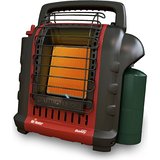 the most common way to heat vehicles off-grid has been with open flame propane. The most common non-OEM propane heater for RVers is the Mr.Heater Buddy series. They use direct flame to heat a ceramic matrix like the old gas heater at your grandparent's house.
the most common way to heat vehicles off-grid has been with open flame propane. The most common non-OEM propane heater for RVers is the Mr.Heater Buddy series. They use direct flame to heat a ceramic matrix like the old gas heater at your grandparent's house.
- Little Buddy - 3800btu.10) A small round unit that mounts directly to a 1# propane bottle. It's rather tall – compare the size of the 1# propane bottle it sits on.
- Big Buddy - 4000btu, 9000btu, 18,000btu. Oversized for most camper applications.
Tip: you can turn the Buddy down below the LOW setting by depressing the gas knob like you are turning it off, then slowly easing the setting back to the desired level. The flames will “flutter” a bit if set too low – increase slightly from that point. Check your CO detector to make sure your CO output isn't increased.
Tip: you can run the Buddy on just the pilot light; this will emit a small but noticeable amount of heat (~300-500 BTU).14)
It is common to run a standard Buddy heater off the camper's large propane cylinder, perhaps teed off the stove line. Unless the line is regulated an inline "filter" (or more properly a “separator”15)) is required. This keeps oils leached out by high pressure from entering the heater and clogging the orifice.
Catalytic
Catalytic heaters are called that because they catalyze (degrade with chemistry and temperature) fuel rather than burn it with flame. Benefits include somewhat higher efficiency (using less fuel, creating less water vapor) and a softer, less direct heat less likely to catch things on fire.
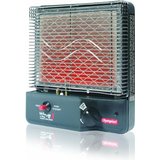 The other major propane heater is the Camco Olympian Wave heater catalytic design, particularly the 3 (3k BTU16)) and 6 (6k BTU17)). Catalytic heaters make more efficient use of propane which should reduce costs and humidity. Catalytic heaters require extra care so their catalyzing surfaces don't get contaminated by dust or other particles. Camco says users should cover the heater when not in use, and that the catalytic pad may have to be replaced if contaminated or after a set number of years.18)
The other major propane heater is the Camco Olympian Wave heater catalytic design, particularly the 3 (3k BTU16)) and 6 (6k BTU17)). Catalytic heaters make more efficient use of propane which should reduce costs and humidity. Catalytic heaters require extra care so their catalyzing surfaces don't get contaminated by dust or other particles. Camco says users should cover the heater when not in use, and that the catalytic pad may have to be replaced if contaminated or after a set number of years.18)
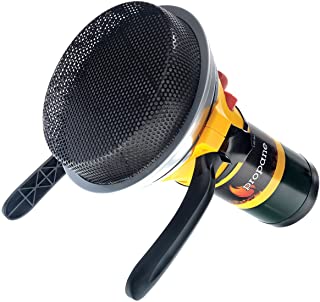 Now discontinued, Coleman made smallish propane catalytic heaters:19)
Now discontinued, Coleman made smallish propane catalytic heaters:19)
- the tilted BlackCat (3,000 btu), etc. Note: a clone of the sportcat has appeared.
- fan-forced ProCat (3,000 btu)
Candles
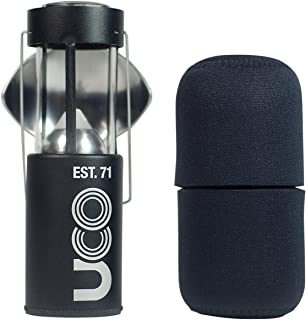 Candles are an oft-discussed source of heat. A candle will put out something like 240btu21) of heat. They also give off light and can be used as a lantern.
Candles are an oft-discussed source of heat. A candle will put out something like 240btu21) of heat. They also give off light and can be used as a lantern.
Downsides include soot, tippiness, and lead content in some wicks. Using candles in a “lantern” fixture may be safer.
The most common candle lantern is the UCO lantern, which uses a proprietary candle which UCO says produces 450 btu. They make tealight versions in non-collapsible mini and collapsible micro sizes.
Electric Heating (while on shore power)
When on unmetered shore ("mains") power electric heating is a practical solution and will conserve propane. The efficiency of electric heaters is the same (3.41 W / W or 3412BTU in a 1000W heater)22) so your choice will be made on other features.
Space Heaters
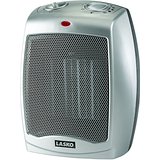 The most common type of space heater is the resistance wire heater with forced airflow.
The most common type of space heater is the resistance wire heater with forced airflow.
Note: high-amp draws like electric space heaters may trip your converter's breakers. Here is a tip for finding a 110v outlet in your RV that does not go through the converter:
“With shore power connected go to your main AC breaker box and find the breaker for your inverter, it is usually 30 amps, and open it. Now check all receptacles for power. If you find one that has power it does not go through the inverter.” - garym11423)
Another note: it has been reported that some RV parks do not allow space heaters.24)
Resistance wire heaters
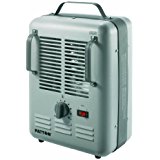 The simplest and cheapest space heaters are resistance wire heaters with a fan blowing over them. The wire is like that found in a toaster or hair dryer. The traditional design is a "milk house" utility heater that looks like it was first made in the 1940s.
The simplest and cheapest space heaters are resistance wire heaters with a fan blowing over them. The wire is like that found in a toaster or hair dryer. The traditional design is a "milk house" utility heater that looks like it was first made in the 1940s.
Ceramic heaters encase the resistance wire in a ceramic matrix. The increased surface area means the wire can be run at a lower temperature, reducing fire hazards. It also has more even heating than the bare wire models since the ceramic adds thermal inertia. This type of heater is the most popular space heater on Amazon, with over 10,000 reviews.
Micathermic heaters encase the heating element in a mica matrix, yielding similar results as the ceramic heater but often requiring more frontal area cases. Mica heaters can be made quite thin.25)
Personal heaters
Inexpensive, low-wattage26) “personal” heaters have recently come to the market with prices as low as $10. Intended to be used at/under a work desk in an office, they deliver 675 - 850btu/hr. 'Dwellers with excess solar power or access to shore power could use these without affecting the bank.
Radiant heaters
 These heaters are intended to generate infrared heat directly onto the target. These are highly directional and could overheat some nearby materials.
These heaters are intended to generate infrared heat directly onto the target. These are highly directional and could overheat some nearby materials.
Oil-filled heaters
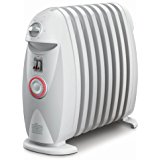 These heaters are similar to residential radiators; they provide steady and silent heat, gently heating the space through convection. These work best when the area is already warm and they can be left on for long stretches of time. Due to low temperature these may be the safest space heaters. You can also dry socks on them, which might end in tragedy with other kinds of heaters.
These heaters are similar to residential radiators; they provide steady and silent heat, gently heating the space through convection. These work best when the area is already warm and they can be left on for long stretches of time. Due to low temperature these may be the safest space heaters. You can also dry socks on them, which might end in tragedy with other kinds of heaters. ![]()
Contact heating
Applying heat directly is much more efficient than heating the surrounding space27) and may be powered by solar or battery power. Examples of contact/direct heat include:
- heating pads
- heat packs
- electric mattress pads.
- USB handwarmers
You can also DIY heated gear with carbon heat strips.
Note: a quirk of electric heating is that the heaters typically don't run at varying power levels for varying heat levels; they vary the ON/OFF duty cycle. So maybe 100% duty cycle at 100w on HI (average 100w) and 10% duty cycle at 100w on LO – on for one second and off for 9 seconds (average 10w). For this reason you may not be able to run a 300w electric blanket on LO (30w average) from a 200w inverter.